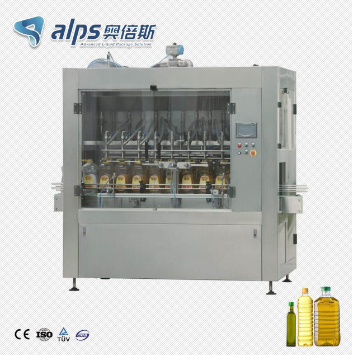Advanced Liquid Package Solution
An automatic oil-filling machine is a mechanical device that streamlines the task of filling containers or bottles with oil.
These machines are widely utilized across industries such as oil and gas, food and beverage, and other manufacturing processes that involve the filling of liquid into bottles.
To ensure that the automatic oil-filling machine functions smoothly and effectively, certain vital components must be meticulously planned and integrated into the system.
In this article, we will delve into these components and their significance in the filling process.
The filling nozzles are a crucial part of an automatic oil-filling machine since they are responsible for accurately dispensing a specific amount of oil into each container or bottle.
These nozzles are commonly constructed from stainless steel and can be customized to accommodate various bottle shapes and sizes.
Furthermore, the filling nozzles frequently include sensors that can identify whether a bottle is present and when the oil has been filled to the appropriate level. The filling system is usually fitted with pumps and storage tanks.

Conveyors play a crucial role in the automatic oil-filling machine by moving bottles or containers through the filling process.
These conveyors are typically constructed from stainless steel and can be customized to suit different bottle sizes and shapes.
Conveyors are often fitted with sensors that can detect when a bottle is in place and when it has been filled with oil.
They are also designed to minimize spillage and ensure that each bottle is positioned correctly for filling.
Conveyors are a critical component of the filling process, as they enable the efficient and seamless movement of bottles or containers through the filling process
Weighing systems are an integral part of an automatic oil filling machine, utilized for measuring the precise quantity of oil dispensed into each container.
These scales are typically extremely precise and can measure weights with an accuracy of a few grams.
Weighing scales are frequently incorporated into the filling nozzles or conveyors and linked to the control system of the machine.
This ensures that every bottle or container is filled with the exact amount of oil required.
The control system of an automatic oil-filling machine acts as its central processing unit, directing the various components of the machine to ensure the precise and efficient filling of each bottle or container.
The control system usually comprises a programmable logic controller (PLC) or microcontroller, as well as sensors and switches that oversee the filling process.
Additionally, the control system communicates with the operator interface, enabling the operator to monitor and control the filling process.
The control system is crucial for the efficient and accurate operation of the automatic oil-filling machine.
The user interface is the section of the automatic oil-filling machine that facilitates communication between the operator and the machine, providing a way for the operator to monitor the filling process and interact with the machine.
Typically, it comprises a touchscreen display that exhibits the machine's status and enables the operator to input filling parameters, such as bottle size and oil volume.
In addition, the user interface may feature a control panel containing buttons and switches that enable the operator to start and stop the machine at will and perform other functions.
The user interface is a vital component of the automatic oil filling machine, as it allows for user-friendly operation and monitoring of the filling process.
The capping system is an essential component of the automatic oil-filling machine, used for capping the bottles once they have been filled with oil.
The capping system can either be integrated into the filling machine or be a standalone machine that is used alongside the filling machine.
The capping system usually consists of a cap feeder, which supplies caps into the machine, and a capping head, which applies the caps to the bottles.
The capping system ensures that the bottles are securely sealed after the filling process, preventing leaks and contamination of the oil.
If you require a dependable and efficient solution for filling bottles or containers with oil, it is worth considering an automatic oil-filling machine.
The machine comprises various components and various working principles, which work together to enhance your production process and increase your productivity.
Reach out to us today to discover more about the advantages of an automatic oil-filling machine for your business.

By continuing to use the site you agree to our privacy policy Terms and Conditions.